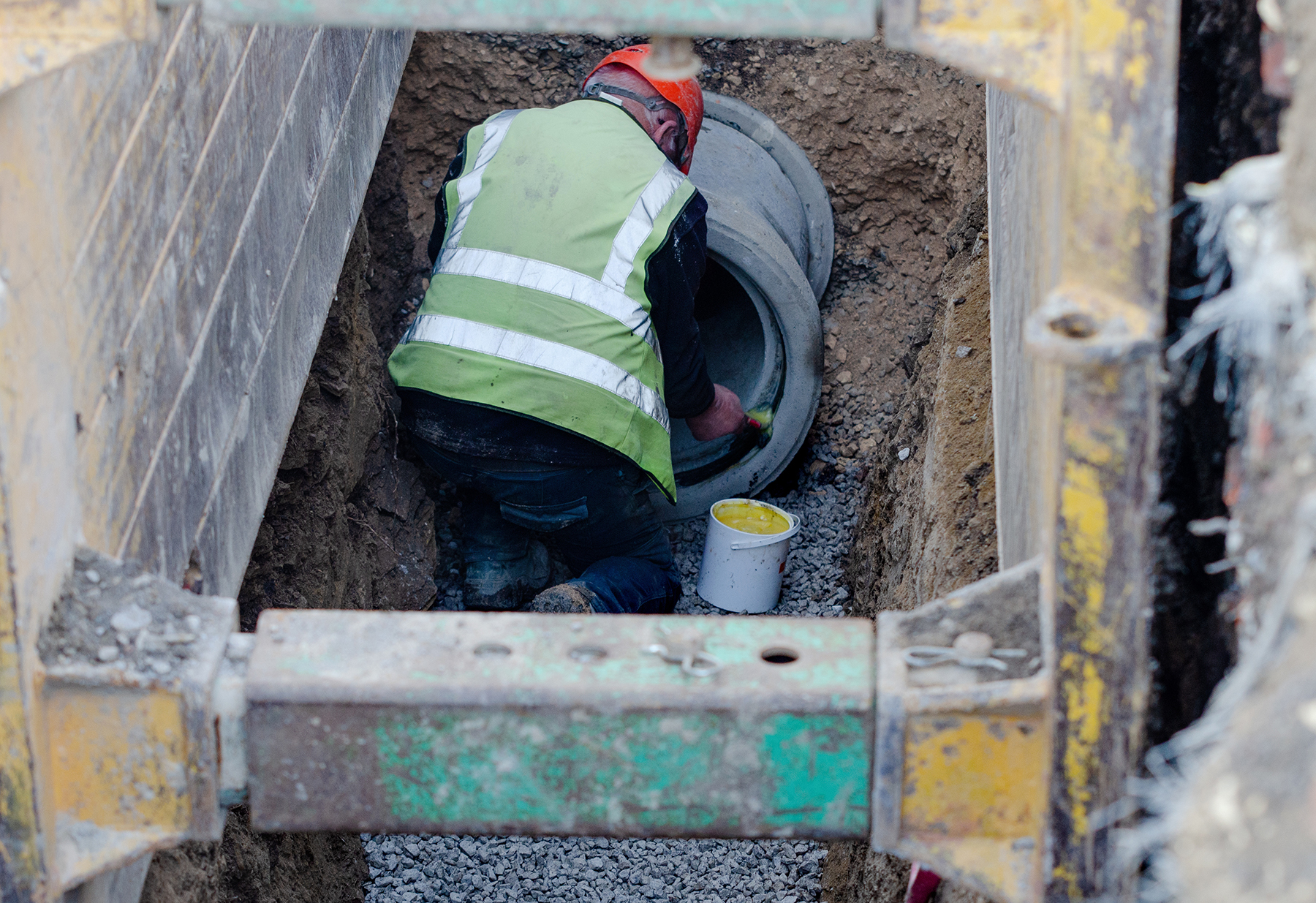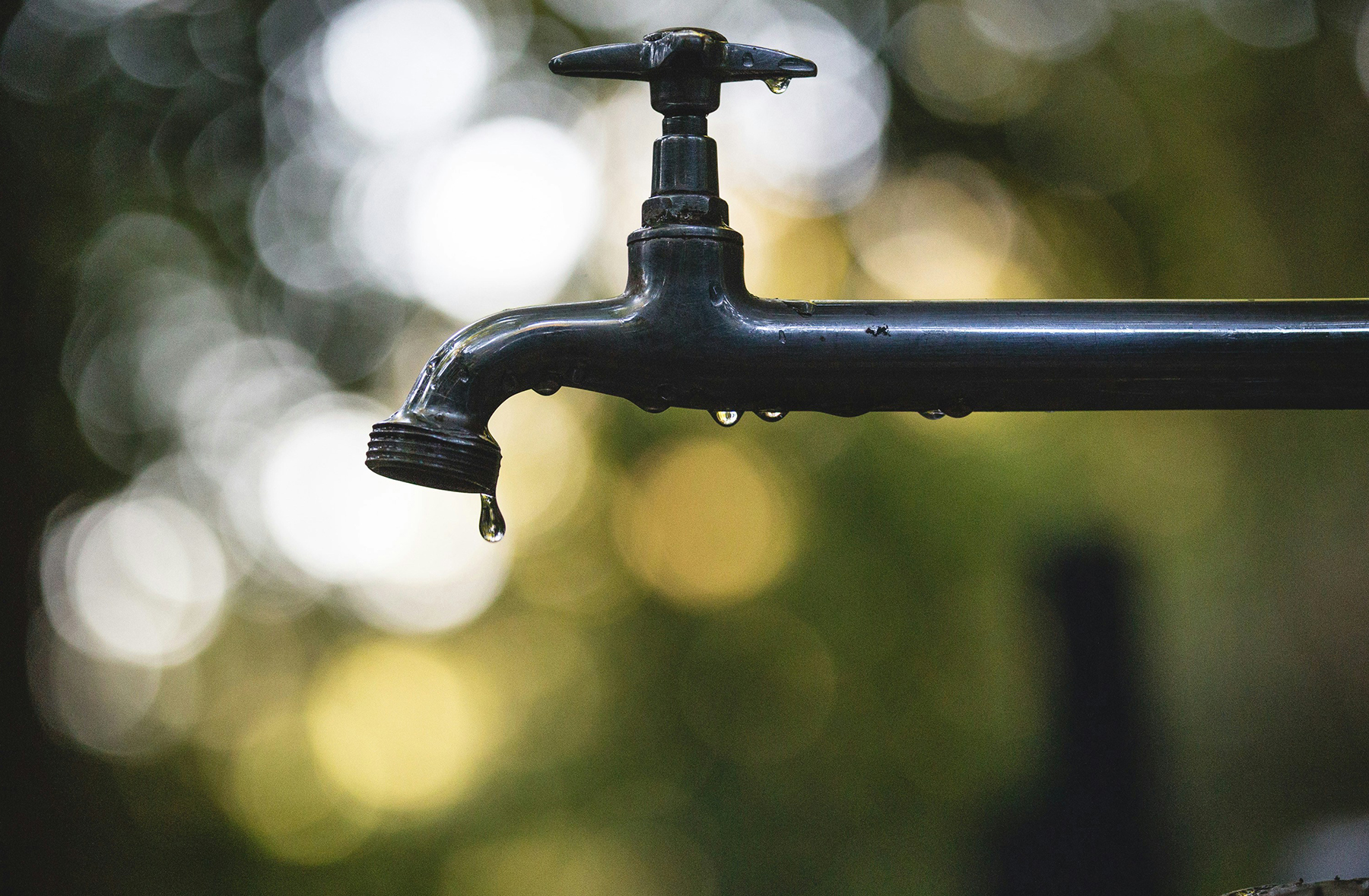
A technician installs an underground concrete drainage pipe. (Image courtesy of Iryna, Adobe Stock)
Who helps keep your house warm, your water running, and your toilets flushing during harsh winter weather? Civil engineers.
Engineers who maintain public utilities must do so year-round regardless of weather conditions, but in the winter, it is often more difficult. This is because of two things: water freezing and expanding in below-freezing temperatures and the freeze-thaw cycle. The cycle is exactly what it sounds like: Frigid temperatures freeze infrastructure above and just below ground, then everything thaws when warmer temperatures arrive.
Further reading:
- Rising heat is scorching Americans – and our infrastructure
- Using targeted sanding to aid heavy hauler trucks in winter
- How to get electric reliability and resilience back in balance in Texas
Continual expansion and contraction of water pipes causes wear over time, especially at connection joints, says sewer engineer Jennifer Baldwin, Ph.D., P.E., M.ASCE, who serves on the 2024 board of governors for ASCE’s Utility Engineering and Surveying Institute and is a strategic growth leader and principal technologist for Jacobs’ Digital OneWater project.
In northern regions of the U.S., these cycles tend to happen a few times a year, so it’s critical for engineers to implement strategies that prevent freezing in the first place to protect infrastructure, Baldwin says.

However, expansion can also happen throughout piping systems in general, says David L. McCord, director of wastewater conveyance at Great Lakes Water Authority in Detroit. Utility pipes that are already under pressure are also at higher risk of damage because there isn’t much room for expansion.
Infrastructure protection
Keeping systems warm is crucial in wintertime to prevent pipes and their contents from freezing. McCord says the facilities at Great Lakes Water Authority use heat tracing. It’s effective for pipes that are above ground and most easily exposed to frigid air. It’s commonly used for warming commercial piping because as long as there is electricity available, it’s consistently effective.
There are two kinds of heat tracing civil engineers can use. In electrical heat tracing, pipes are wrapped with electrical wires that transfer heat into them, warming the fluid along the entire length of the pipe. Steam tracing involves installing a set of tubes next to sewer or water pipes. The tubes are filled with hot steam, and that efficiently keeps fluid in the pipes warm enough to flow as normal.
Additionally, the kind of piping utilities use matters. Plastic, polyvinyl chloride, fiberglass-reinforced, and concrete piping are all more resilient to freezing temperatures than other materials, Baldwin says, and are commonplace throughout the U.S. because they require less remediation than other materials.
However, she continues, selecting the right contractors for underground pipe installation and maintenance is also important for the life of the infrastructure. Underground piping is only as secure as the soil compaction around it – if pipes are laid correctly the first time or remediated well to prevent soil movement, that helps with insulation and pipe stability, both of which can protect them during freeze-thaw cycles.
Peter Fromm, Great Lakes Water Authority’s director of water transmission, additionally advises civil engineers to study their systems ahead of the winter months and note the presence of dead ends or reduced feeds in their systems, so they can mitigate or prepare for issues ahead of time.
AI bolsters winter utility management
Baldwin’s position at Jacobs has given her insight into how artificial intelligence can help utility managers better protect their infrastructure.
Utilities often have a lot of data surrounding performance and inspections, such as closed-circuit television, she says. For those utilities that have access to years of data, AI can process it and provide suggestions for infrastructure maintenance and longevity.
Condition assessment – i.e., looking for defects – is often completed by humans. She says technological adoption could lead to AI-completed assessments that are void of human error, leading to more realistic and accurate system maintenance schedules that prevent severe damage in the first place.
Monitoring systems can also provide engineers with data to know when defects are becoming critical. Catching issues beforehand saves money, time, and resources for inspection and rehabilitation.
What you can do at home
If you’re wondering how to protect your home from frozen pipes, Baldwin suggests a few things. Three steps to take are installing frost-free hose bibs for outside spigots, leaving a faucet dripping to keep water moving through pipes, and ensuring any outside piping or pipes that can be exposed to cold air are wrapped with foam insulation. Foam insulation and hose bibs can be purchased at any hardware store.

A new water pipe is installed underneath a residential street. (Image courtesy of Ancoay, Adobe Stock)
Not every house will require the same weatherproofing. “It depends on how your pipes are laid in your house,” Baldwin said. “For instance, I have a crawl space, and the plumbing is in the crawl space. So with that, (I’ve) added insulation to the plumbing pipes that are underneath so (they have) a little bit more protection in the winter.”
Pipes in a basement are more likely to be protected from cold air, as are those that are buried underground.
McCord suggests people also ensure their heating, ventilation, and air-conditioning systems are running well, that outdoor faucets like hoses are drained fully before a freeze, and that standing water doesn’t collect around catch basins during snowy weather. He also recommends piping insulation and sealing up crawl spaces to prevent cold air entry.
Fromm also maintains the importance of winterizing building spigots and fire hydrants. For civil engineers, he advises keeping small water mains that are needed throughout winter properly warmed through heat tracing.
Additionally, everyone should pay attention to running water that may accumulate in the street. McCord says to always report instances to utility managers so they can ensure wastewater systems are functioning properly.



